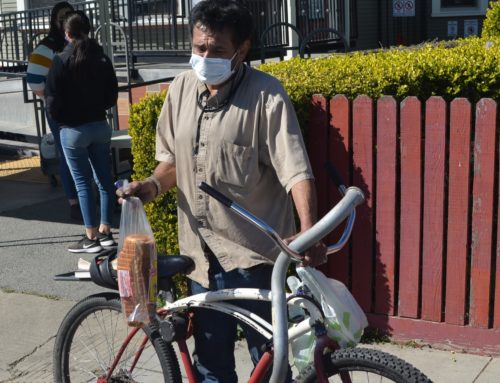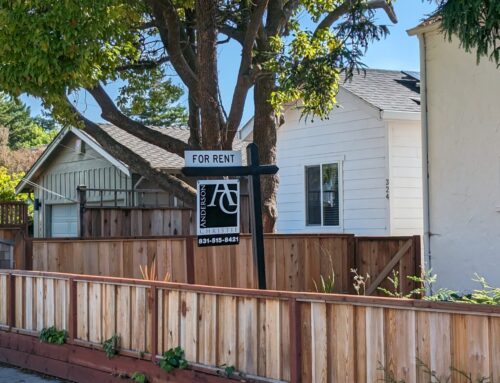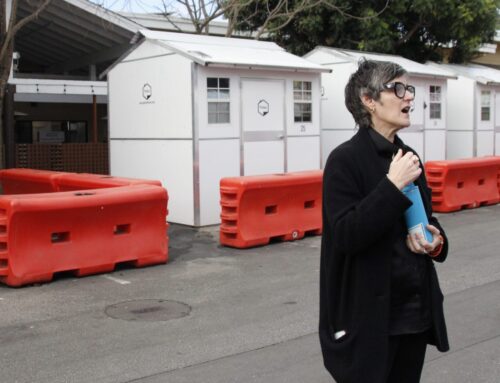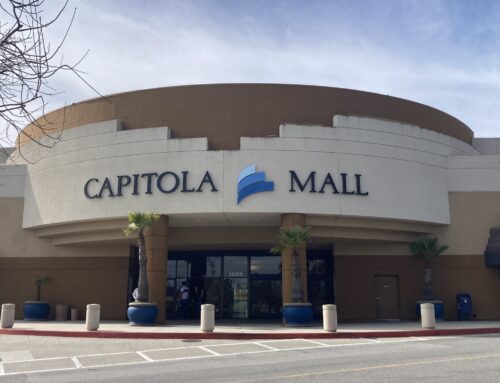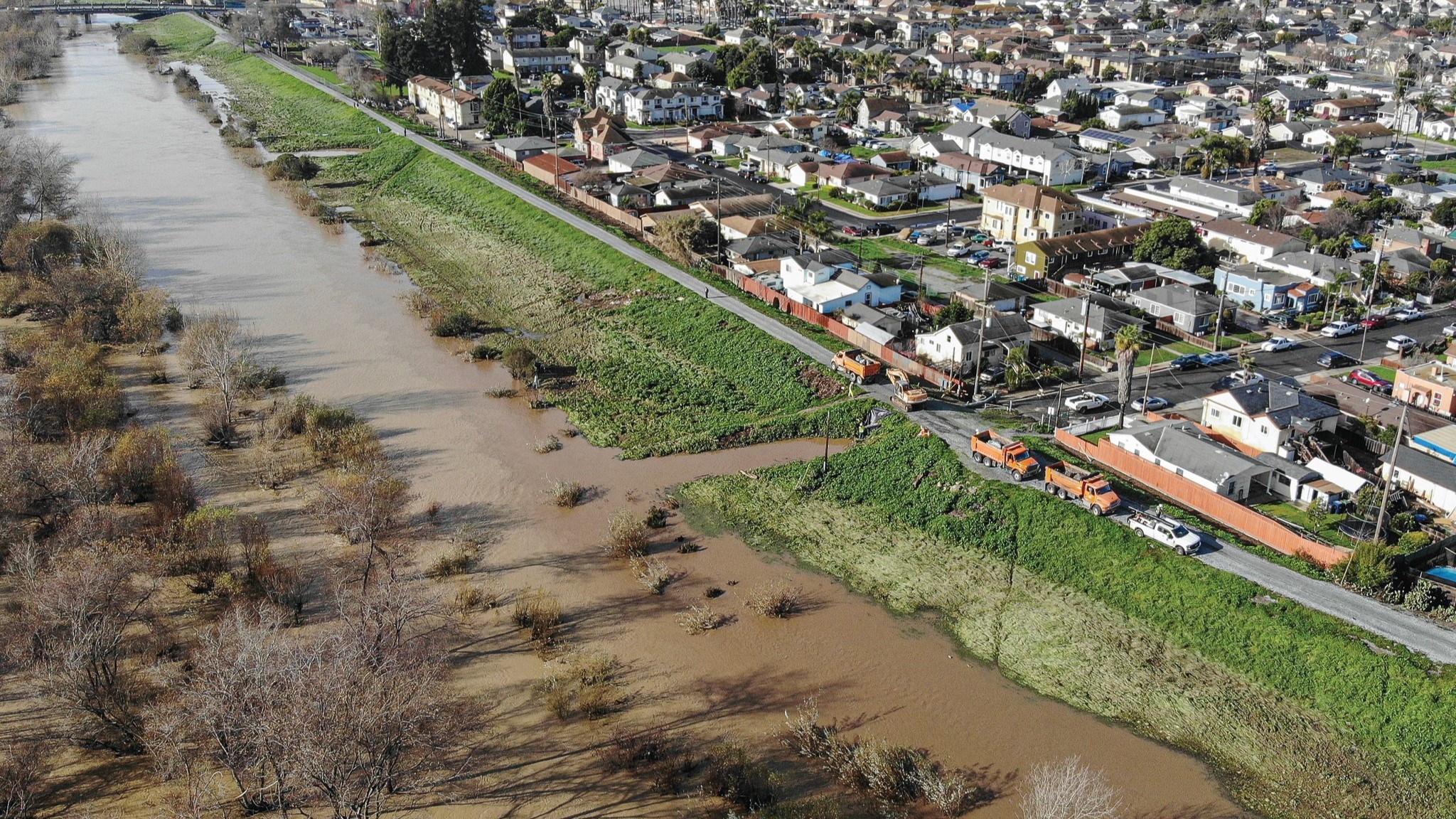
The Pajaro River threatened some Watsonville homes this month while rain flooded others. (City of Watsonville)
WATSONVILLE >> For some Santa Cruz County residents who were evacuated during January’s storms, floods and other storm damage have led to a maze of applications for federal and local aid.
“The biggest barrier, at the beginning, was just not knowing where to start,” said Tony Nuñez, spokesman for the Watsonville-based nonprofit group Community Bridges.
Since the heavy rain and floods have subsided, leaders from Community Bridges and the Federal Emergency Management Agency, or FEMA, have tried to guide storm victims toward aid for repairs. Some lessons from the process could help others prepare for disaster.
Disaster victims’ first step has been to photograph the damage to homes and property, then create a comprehensive list of what was damaged for any insurance company claims, said Nuñez.
Although residents can apply for FEMA assistance before or during an insurance claim, FEMA won’t distribute money until the claim has been processed, said FEMA spokeswoman Tiana Suber.
Santa Cruz County residents affected by the storms can apply for money from FEMA for:
- Damage to homes, vehicles and other property.
- Rental assistance.
- Transport and storage fees.
- Child care expenses.
- Cleanup and waste disposal.
- Replacement for lost wages.
Aid workers have said there has been confusion among some South County storm victims about whether aid is available to non-citizens. FEMA assistance is available to families with at least one U.S. citizen, non-citizen national or person with “qualified alien” status. Immigrant parents and guardians of a child with citizenship can apply as a co-applicant with their child — even if the parent or guardian is not in the country legally.
Eligible residents can apply for assistance online, by phone at 1-800-621-3362, or in person at a FEMA Disaster Recovery Center. Recovery centers are open 9 a.m. to 7 p.m. daily at:
- Ramsay Park, 1301 Main St., Watsonville.
- Felton Branch Library, 6121 Gushee St., Felton.
Options for Spanish speakers are available online, by phone, or at disaster response centers. Interpreters for other languages are available by phone.
FEMA applications must be submitted by March 16 to be considered, Suber said.
Types of assistance
The federal government offers two main kinds of assistance: Low-interest loans administered by the Small Business Administration and direct financial assistance from FEMA that doesn’t need to be paid back.
Individuals who apply for assistance first may be directed to the Small Business Administration to complete a loan application.
- Homeowners can borrow up to $200,000 for home repair.
- Renters and homeowners can borrow up to $40,000 to replace or repair destroyed or damaged property.
- Small businesses and nonprofits can borrow up to $2 million to cover losses.
- Loans are paid back over a period of up to 30 years and accrue no interest for the first year.
Applicants referred to the Small Business Administration should complete the application process, even if they don’t want a loan, said Suber. Applicants don’t need to accept the loan to receive money or housing from FEMA.
Applicants who aren’t offered a loan due to poor credit or other issues are referred to FEMA and may receive additional grants. Residents who reject the loan or don’t apply for it will be eligible for fewer types of FEMA assistance.
“To get all of the federal assistance they may be eligible for, they should complete the SBA loan application process,” wrote Garth MacDonald, a spokesman for the SBA.
Grants for immediate housing assistance are not dependent on the SBA loan application, Suber said. Individuals may be offered FEMA grants of up to $40,000, Suber said.
Nuñez, of Community Bridges, said the loan application process has been “a roadblock for some people, or at least a point of hesitancy.” Although some applicants may be wary of the loans, the low-interest money can help with costly repairs, Nuñez said. “If it’s something that you can afford to pay back, we are telling our clients to take it,” he said.
Once applicants have registered with FEMA, an inspector will make an appointment to see the damaged property within three to seven days, Suber said.
Applicants should be wary of scammers who have targeted disaster survivors while posing as FEMA officials. FEMA inspectors “will have your registration number and will have a federal badge,” said Suber. “If anybody comes to your home unexpectedly or is asking for money, or asking for money throughout the process, that is a definite red flag.”
Within a week after inspection, FEMA will send applicants money or a request for more information.
If FEMA rejects a request for funds, applicants can appeal the decision and provide additional documentation of storm damages receipts for costs like cleanup materials and hotel rooms.
Local money
Local grant money is available for residents who are ineligible for FEMA money, have not yet received insurance payouts or FEMA funds or need additional financial assistance. The program is administered by Community Bridges, Community Action Board of Santa Cruz County and Catholic Charities Diocese of Monterey.
So far, the program has raised $355,000 from Catholic Charities Diocese of Monterey, the Community Foundation Santa Cruz County and the Community Foundation for Monterey County. The money is being distributed on a triage basis to flood victims in Santa Cruz County and North Monterey County, said Community Bridges CEO Raymon Cancino.
The money can be used to cover the costs of a hotel, rental housing, household items or needs not covered by insurance or other sources.
Applications for the money are available online or at any family resource location:
- La Manzana Community Resources: 521 Main Street, Suite Y. 831-724-2997. Open 9 a.m. to noon and 1-4:30 p.m. Monday through Friday.
- Live Oak Community Resources: 1740 17th Ave., Live Oak. 831-476-7284. Open 9 a.m. to noon and 1-5 p.m. Monday through Thursday.
- Mountain Community Resources: 6134 Highway 9, Felton. 831-335-6600. Open 9 a.m. to 12:30 p.m. and 1-4:30 p.m. Monday and Thursday. Open 9 a.m. to noon and by appointment 1-5 p.m. Tuesday and Wednesday.
- Nueva Vista Community Resources, 711 East Cliff Drive. 831-423-5741. Open 9 a.m. to noon and 1-15 p.m. Monday, Tuesday, Wednesday and Friday.
- Davenport Resource Service Center, 150 Church St., Davenport. 831-425-8115. 10 a.m. to 6 p.m. Monday through Thursday.
- Catholic Charities, 656 Main St., Watsonville. 831-316-9122 or [email protected]
For information about the disaster assistance fund, call 211. Local nonprofit group Community Action Board also has a hotline for residents who need connections to resources, including rent assistance. Call 831-440-3556. Call center workers speak English, Spanish, Mixteco and Triqui.
As the long process of repairs begins, the long-term effects of the storm are still unclear, Nuñez said. Community Bridges is working on longer-term disaster relief assistance for repairs and wage assistance for those who lost their jobs, he said.
Other resources
- Community Bridges has free rentals for tools and cleanup equipment, as well as other resources, Cancino said.
- The County of Santa Cruz has public dumpsters for storm-damaged furniture, carpet, drywall, clothing and other items. The trash bins are in Soquel, Rio Del Mar, Davenport, Felton Grove, Paradise Park, Ben Lomond, and two areas near Watsonville.
- Recordings of flood recovery information sessions held by Community Bridges are available online in English, Spanish, Mixteco and Triqui.
- The Volunteer Center of Santa Cruz County is accepting requests from people who need help with cleanup or other assistance.
Editor’s note: This story has been updated to clarify eligibility and rules for FEMA and SBA money.
Read Santa Cruz Local's Winter Storms Resource Page
Jesse Kathan is a staff reporter for Santa Cruz Local through the California Local News Fellowship. Kathan holds a master's degree in science communications from UC Santa Cruz.


